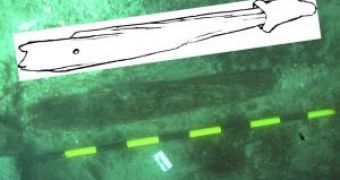One of the first maritime civilizations rose on the Mediterranean, so it's no wonder that now archaeologists have found embedded in the mud of the seafloor the world's oldest wooden anchor of an ancient port at the Aegean Sea in what is now Turkey.
The ancient Greek colony, named Klazomenai, founded in the 1st millennium BC, was located near the modern Turkish port city of Urla.
The 2,700 years old anchor was discovered near a submerged construction, imbedded about 1.5 m (5 ft) underground by a team from the Leon Recanati Institute for Maritime Studies of the University of Haifa. The discovery is the result of a cooperative project between the University of Haifa and Ankara University.
Researches started it in 2000 and Urla itself, located near Izmir, has over 5,000 years of maritime history. The researchers found remnants of an ancient port which seems to have served the ancient Greek settlement of Klazomenai, sunk due to a natural disaster, probably an earthquake, in the 6th century BC, but without written records, this remains a supposition. Part of the port slid into the sea burying the anchor in marine sediment.
"Urla is a very ancient site that has been excavated before. There was never a question that there was a natural disaster here at some point, probably an earthquake."" said lead researcher Michal Artzy, of the University of Haifa.
The wooden log that was wedged into the ground at the bottom of the ancient harbor in 2003 finally proved to be a wooden anchor with a metal-covered crown.
"In addition to the damage it caused to the port, the natural disaster that hit the area also destroyed the area of the city that was built along the coast." said Artzy.
"On the sea floor, we found a layer of what we call Poseidon grass [like seaweed], and beneath that it was covered with ceramics with goat motifs from that time. It is all preserved in a layer, and you can see that the anchor is part of that period too. Just a portion of the original anchor remains," she added.
"The anchor broke when [the sailors] tried to pull it up, but the important part remained in the sea floor-the part with metal remains. It tells us that this is an Aegean-type anchor, though it could have come from anywhere in the region."

 14 DAY TRIAL //
14 DAY TRIAL //